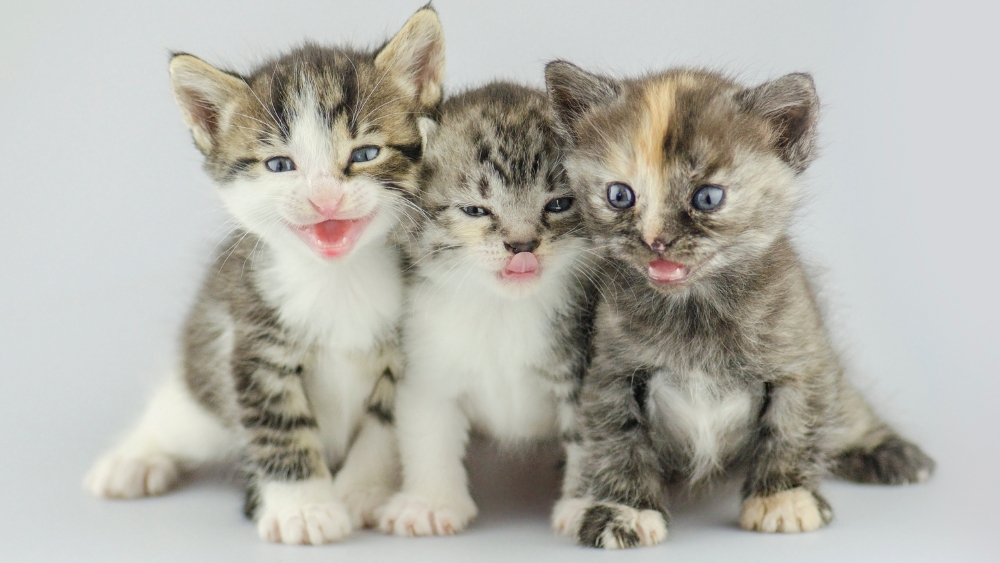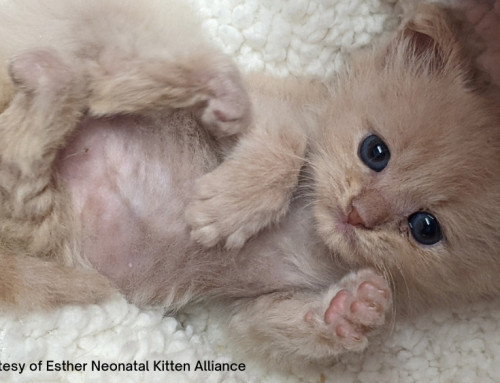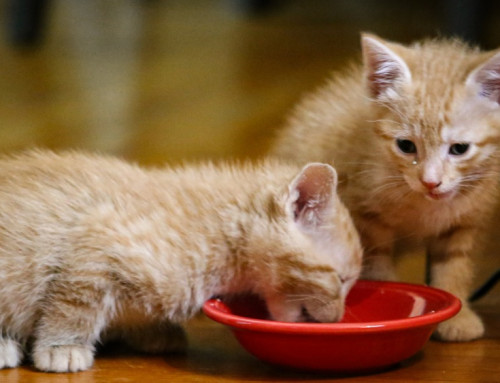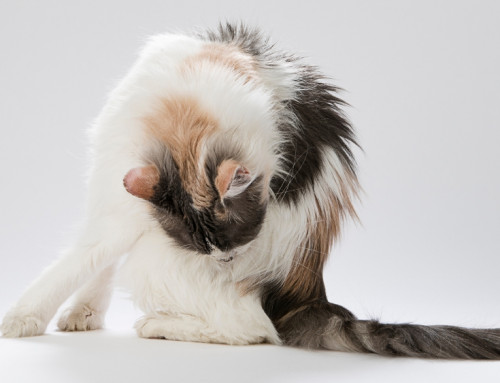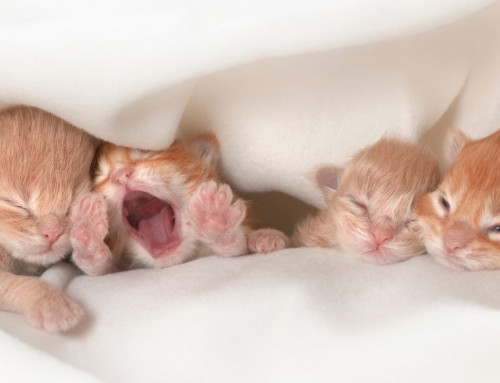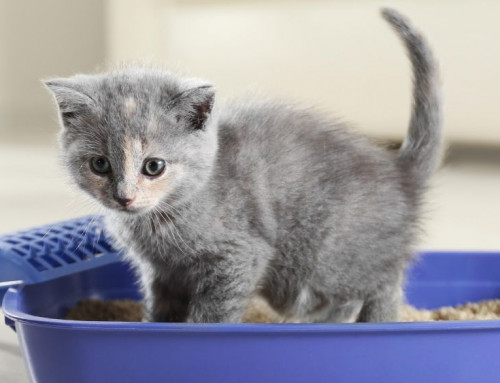Share this resource or email it to a friend!
Limiting exposure to infectious diseases while providing opportunities for same-species interaction is critical to kitten development. However, in general, mixing should only be considered for very young, healthy kittens who are not ready for adoption. Ultimately, a case-by-case decision will be required to determine if the benefits of same-species interaction outweigh the risk of mixing underage kittens for all concerned.
The Lack of Same-Species Interaction in Underage Kittens
Kittens raised without same-species interaction have a higher probability of not developing appropriate behaviors towards other felines, including learning how far to go in play-wrestling and biting and how to send and receive physical and verbal cues to and from other felines.
In addition, orphaned single kittens who do not experience same-species interaction are more susceptible to:
- Clinging behavior towards humans
- Vocalizing excessively and seeking attention
- Suckling obsessively on clothing, blankets and other pets
- Clawing or biting while playing
- Biting ankles, especially when a person starts walking away
- Chewing or scratching objects and other destructive behaviors
- Urinating and defecating outside the litter box and marking
The Benefits of Same-Species Interaction in Underage Kittens
Play among littermates is vital to kitten development; it enhances physical coordination, increases social skills, provides greater learning opportunities and fulfills the need for basic companionship.
The presence of a healthy, receptive, nursing queen with a litter of healthy kittens can provide orphaned kittens with the basics necessary for survival, as well as the maternal and sibling behavior essential for healthy kitten development. But, before mixing underage kittens with a queen or other kittens the risk of infectious disease versus the benefits of socialization should be thoroughly considered.
Guidelines for Mixing Underage Kittens
Guidelines should be taken into account before mixing an underage kitten/s with other kittens:
- If considering the addition of a potentially infectious singleton into a healthy litter, the risk to the litter surpasses any possible benefit to the single kitten and should not be done.
- If two healthy singletons are present at the same time, they are of equal risk to each other and can be mixed.
- If a kitten is displaying any signs of infectious disease, even mixing the kitten with another sick kitten, is very risky because they could be harboring different pathogens.
Signs of Infectious Diseases
Orphans, surrogate queens and surrogate littermates should be examined for fungal infections, such as ringworm, and any clinical signs of upper respiratory infection.
Some signs of infectious disease include:
- Sneezing and/or nasal discharge
- Squinting and/or eye discharge
- Vomiting
- Diarrhea
- Decreased appetite
- Skin lesions
- Unexplained weight loss
- Lethargy
- Sudden death of a littermate
However, even apparently healthy kittens may be contagious during a period of time after exposure to an infectious pathogen and before a subsequent display of illness. Kittens who appear healthy for 14 days present little to no risk of incubating panleukopenia. A kitten who appears healthy after 14 days is a better candidate for mixing than a kitten with an unknown medical history.
Treatment for External and Internal Parasites
Treatment for external parasites, such as fleas, should be done before mixing. Be aware that many over-the-counter and prescribed flea treatments are not made for use on kittens, especially neonates. The best way to remove fleas from kittens, as long as there are no open wounds and kittens are otherwise stable (not hypothermic, hypoglycemic or dehydrated), is to bathe them.
A veterinarian will have to determine the safest way to remove fleas if a kitten is too sick to tolerate the stress of a bath, too small or too young for flea control products or needs medical treatment. In addition to ridding kittens of fleas, safe products must be used, often repeatedly, on queens, other household pets, carpets, bedding, toys and other objects that may harbor flea eggs, larvae and adult fleas.
It is recommended to deworm kittens starting at 2 weeks of age and repeating every two weeks; queens should be dewormed at the same time as her kittens, as false negative fecal tests can frequently occur. Household pets should be current on monthly heartworm/intestinal parasite medications and fecals checked every 6-12 months.
Surrogate Queens for Underage Kittens
If using a surrogate queen, the following factors must be considered:
- A kitten who appears healthy may be incubating a disease which could affect the queen and/or the litter she is nursing.
- An existing older litter may outcompete an orphan/s for the nourishment and support the kitten requires for survival.
- Overloading the queen with more kittens than she originally gave birth to, or with any subsequent litters, may cause her health and emotional problems.
Fortunately, most queens who have successfully raised kittens will readily foster orphans. It is imperative, when selecting a queen, to choose one whose own kittens are of similar size to the orphan/s or who have recently been weaned. Doing so will prevent competition for mother’s milk between any smaller/younger and larger/older kittens. Introductions should take place in a quiet, warm, non-stressful setting away from other humans and animals to aid in ensuring acceptance. Some queens will thrive as surrogate mothers and can safely raise consecutive litters.
It is important that lactating queens be fed adequate high-quality kitten food to meet their increased nutritional needs and be provided with ample water, as fluid requirements will also be increased. Surrogate queens should be tested for FeLV and FIV prior to mixing; orphaned kittens can be tested at 6 weeks of age, or even earlier if the size of kitten and skill of the phlebotomist (individual drawing blood) allow.
One of the best measures of success of a queen’s parenting abilities is the appearance and daily growth of the kittens in her care. Healthy kittens should have clear eyes with no tearing or discharge; clean nares with no nasal discharge; clean ears with no odor, head shaking or scratching; a clean, soft coat with no dandruff; and an anal area that is clean, with no discoloration or matted fur.
Other Considerations for Mixing Underage Kittens
In addition to being healthy and temperamentally suitable, surrogate queens should be up to date on their viral rhinotracheitis, calicivirus, and panleukopenia virus (FVRCP) vaccine; other cats being introduced to orphans should have completed their FVRCP series. Kittens can receive their first FVRCP vaccine as early as 4 weeks of age if they weigh over 454 grams/1 pound.
Hand-Raised Kittens
If a surrogate queen is unavailable or the risk is too great to other kittens, singletons and multiple orphans may be hand-raised by a foster. Even kittens being fostered should undergo a 14-day quarantine period before they are introduced to other household felines (if allowed by the shelter or rescue). Do not rule out the possibility of utilizing a non-lactating queen, spayed female or even a neutered male who may accept a singleton or a litter of orphans. Although hand-feeding will be necessary, the kitten/s will benefit in their emotional and social development. It is especially important for a singleton who would otherwise be deprived of maternal and/or sibling relationships.

